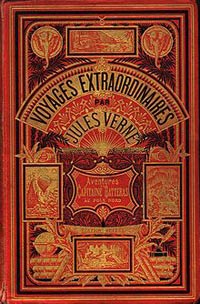Gearing Up and Getting the Lead Out

Leather waistcoats, steam powered castles and swashbuckling airship pirates; Steampunk has without a doubt experienced a tremendous rise in popularity in recent years. Steampunk is one of the most visually stunning of all subcultures, whether it's the notion of a towering bronze city atop a winged airship or the joy of dressing as a noble, Victorian automaton.
It's important to remember that Steampunk should be seen as a mixture between Speculative and anachronistic science fiction. Speculative fiction takes an existing historical or fictional event/ person and places them into a new history in which the events have been altered in some way. Anachronistic fiction is where the author messes with history and introduces people, creatures or technology into a time period in which they did not exist. The combination of these ideas results in a fictional world parallel to our own.
The style and history of Steampunk have slowly edged their way into a number of films and other forms of media over the last decade. But even before the invention of the term, in 1987, movies were being made about giant clockwork robots and neo-Victorian characters.
Steampunk has made its presence just as known in the real world through its quirky fashion sense and nostalgic, if somewhat futuristic, appearance. Modding, cosplaying and even the occasional bit of interior design have all been opened up to an expansive new world of choices, and yes, it comes in leather.
For some Halloween comes but once a year...
...But for those who embrace the Steampunk lifestyle every wardrobe is a journey through time and space (like the TARDIS mixed with the entrance to Narnia but in Steampunk form).
There are a number of cultures that have influenced and shaped the look of Steampunk over the years. The biggest cultural contributors to the fashion of Steampunk are Victorian, Old Western, Pirate, Asian, Gypsy and Cabaret. While each of these styles has their own distinct feel many steampunks choose to combine them to create a costume suitable for their character.

Two people dressed in a Steampunk Style
Headwear, while not essential, is one of the most noticeable parts of a Steampunk's wardrobe. Bowler hats, aviator helmets, or tricorn hats are great ways to complete any costume. The Victorian top hat is a must for anyone wanting to display a sense of elegant bad-assness. Due to the top hat's size they can be fitted with any number of additions. Aviator goggles are the standard headwear accessory. Popular alternatives to this include: steam chimneys, feathers, or gears; all of which can be mixed and matched to your heart's content.
The standard attire worn by steampunks is impossible to determine due to the vast number of characters and cultures that influence the style. Generic clothing items among men include: trench coats, leather waist coats, Victorian suits, along with pieces of scavenged leather armour. For the lady steampunk, corsets, bustiers, Victorian dresses and tanned pants are all suitable options.
The colour palette for the clothing consists of a short range of muted colours. Browns, tan, bronze and leather are the standard colour scheme. Vibrant reds, purples, greens and occasionally black can also be introduced. The additional colours are often included in costumes influenced by cabaret and gypsy styles.
Modding, Because Gears and Mahogany Make Everything Cooler
Modding a hobby popular with most devoted of steampunks. Modding is the process of taking an ordinary, everyday item and re-fitting it so that it looks like it comes out of the world of steampunk. Objects are first dismantled and then reassembled with brass fittings, gears, leather, and lenses. Some objects are
completely reassembled with a hard wood body for added effect. Modders with experience and talent have been known to improve the functionality the device while also making it more energy efficient.
All's Wells that ends Wells
All steampunk can be traced back to pre-science fiction writings of the 1800's. The two writers most noted for their contributions to the existence of Steampunk are Jules Verne and H.G Wells. These two men are often named as the fathers of science fiction.

Jules Verne Book Cover
Jules Verne was a French writer born in 1928. Verne is known for his large collection of work. By the time of his death Verne had an extensive bibliography of over sixty "Voyages Extraordinaire", or Extraordinary Adventures. Verne had no scientific or technological background but had a keen interest in technology. Verne's love of technology is reflected in his work. Although outlandish and fantastic for his time much of the technology Verne wrote about did eventually come into existence. His novels "Twenty Thousand Leagues Under the Sea" and "From Earth to the Moon" would have a major impact on the aesthetic look of the steampunk culture, over a hundred years after his death.
Herbert George Wells, known by his pen name H.G Wells, was a American writer who worked through the last quarter of the Victorian era. Wells' work focused mainly on humanity and the advancement of civilization. Like Verne, Wells had a keen interest in technology and his work laid the groundwork for science fiction writers for decades. "The Time Machine" and "The War of the Worlds", both written at the end of the Victorian era, are considered two of the greatest pieces of steampunk literature ever written.